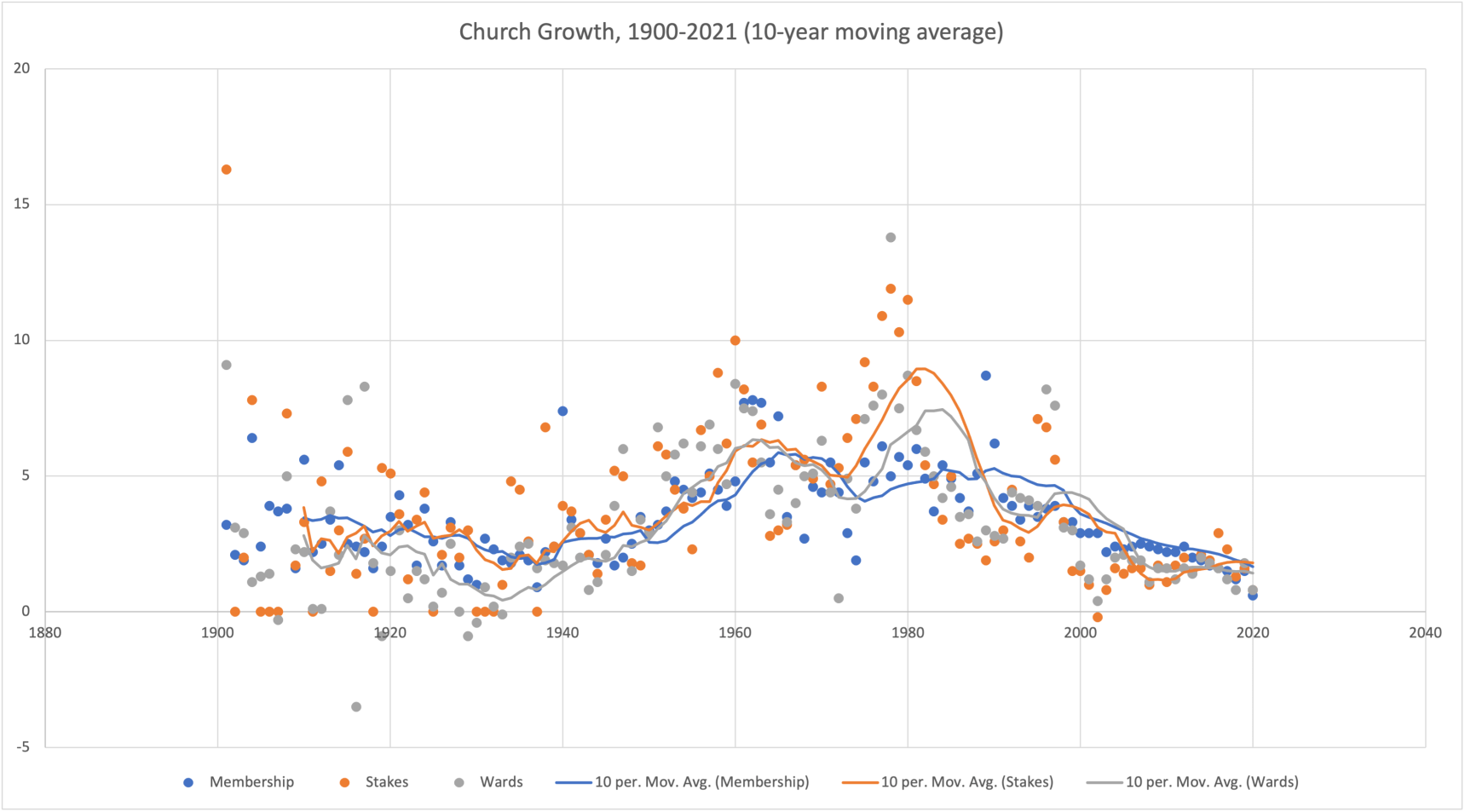Church Growth and Activity

Is the church growing or shrinking?
Overall, it's growing.[2] However, in some places, the growth rate is flat.[3] In others, it is relatively high.[4]
But isn't the rate of growth declining?
Yes. The Church's growth rate has been declining for the past couple of decades, from a growth rate of 5%–10% in the late twentieth century down to a stable growth rate of about 1%–2% in the twenty-first century.[5]
Why has the Church's growth rate been declining?
Religious affiliation has been generally declining in the United States[6] and elsewhere.[7] Nearly all major religious organizations have declined in numbers in the U.S.[8]
Isn't most of the Church growth from children being born into the Church as opposed to converts?
No. For the past decade, the Church has had about a quarter-million convert baptisms each year, with the children of record reported by the Church in the low hundred thousand each year.[9]
Has the Church ever been the "fastest-growing religion"?
Possibly. The U.S. Census Bureau does not collect information on religion, so it's difficult to make comparisons with other religions.[10] The Church says it "makes no statistical comparisons with other churches" and "makes no claim to be the fastest-growing Christian denomination."[11]
What percentage of Church members are "active"?
The best current data from the U.S. General Social Survey indicates about 65% of U.S. members attend church once a week.[12] Worldwide membership activity is estimated to be around 30% from Reaching the Nations: International Church Growth Almanac, an unofficial Church almanac.[13]
How many new converts remain active?
Possibly 20%–50%, according to various third-party studies.[14] However, convert retention rates vary widely by geography[15] and by time measured.[16]
- Marc S.
“People convert to the gospel of Jesus Christ or the actual church for one of three reasons: social, intellectual, or spiritual. I think members remain active for the same three reasons. I believe the most popular is SOCIAL, unfortunately. It takes real work on the SPIRITUAL.” - Drew T.
“I believe there is a sifting going on. We will pretty much sift ourselves out of the Church for varying reasons like getting caught up in the world and its strong attractions.” - Brent
“The convert baptism rate needs more context. Since 9 year olds of inactive parents count as a convert it muddies the water. If 8, 9 or even 10 year olds get baptized, they don’t fit well in the convert category, but make more sense as a child or record.” - Grant
“I think with information about the church being so widely available now testimonies either get destroyed or strengthened. You need a lot of faith to join a church that is so against the norm that I’m not surprised at all by declining growth rate.” - Jordan W.
“I used to think it was important that the church grow fast and sweep in converts by the tens of millions. But then I looked more carefully at the prophecy of 1 Nephi 14:12-14. We will be a scattered few, but because of our covenants, we will be blessed with power and great glory.”



 about this topic
about this topic